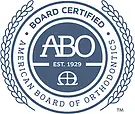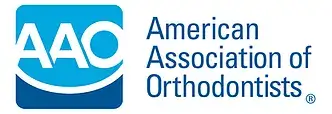Figuring out when your child needs braces can be tricky. It’s important to know when to start orthodontic treatment. But, there’s no one-size-fits-all answer. Many things influence this decision, making it very personal.
The American Association of Orthodontists (AAO) suggests a first check-up by age 7. This early visit can spot problems early. It also helps plan future treatments. Knowing this and your child’s specific needs can lead to a brighter, healthier smile.
Understanding Early Orthodontic Evaluation
The American Association of Orthodontists (AAO) suggests an initial orthodontic assessment by age 7. This early check helps spot any jaw or tooth growth problems. It follows AAO guidelines to catch and fix issues before they get worse and cost more.
During this assessment, orthodontists look at how teeth and jaws grow. They check if early treatments are needed. These treatments help guide jaw growth and align teeth better, which might avoid more complex treatments later.
- Identification of crowded or misplaced teeth
- Detection of premature loss of baby teeth
- Monitoring of jaw growth and positioning
These steps are backed by research and AAO guidelines. Early treatment helps fix problems when they’re easier to handle. This makes dental care smoother for kids.
Signs Your Child May Need Braces
Spotting orthodontic issues early is key for your child’s dental health. Parents should watch for signs that might mean braces are needed. These signs can be seen or noticed in how your child eats and talks.
Visual cues are often the most straightforward way to identify potential problems:
- Crooked or misaligned teeth
- Noticeable crowding of teeth
- Abnormal bite patterns, such as overbite, underbite, or crossbite
Beyond what you can see, there are functional issues too. These might mean your child needs braces:
- Difficulty chewing or biting food
- Speech difficulties
- Frequent biting of the cheeks or roof of the mouth
Knowing what orthodontic problems are is important. Some common ones include:
- Overbite: When the upper front teeth overlap the lower too much.
- Underbite: When the lower teeth stick out past the upper teeth.
- Crowding: Teeth don’t have enough room, so they overlap or twist.
- Crossbite: Upper teeth bite inside the lower teeth instead of outside.
Spotting these problems early can lead to better treatment results. If you see any signs, talk to an orthodontist right away.
What age should a child get braces?
Finding the right time for braces depends on a child’s growth and orthodontic needs. The American Association of Orthodontists suggests a first check-up by age seven. But, treatment might not start right away.
The appropriate time for orthodontic work can vary a lot. Some kids start early, between six and ten, to fix big issues. This early treatment helps when only some permanent teeth are in.
Most kids, though, get braces when they’re a bit older. This is usually between 10 and 14, when most permanent teeth have come in. Orthodontists prefer this age because the jaw and face are still growing. It makes it easier to move teeth into the right spot.
There’s no single best age for braces. Many things matter, like how bad the teeth are misaligned, dental health, and how fast the child is growing. Talking to an orthodontist early can help figure out the best time for your child.
Today, there are many types of braces, like clear ones and ceramic ones. These options let families pick the best time for treatment. It makes orthodontic care more flexible and personal.
In the end, the appropriate time for orthodontic work depends on a detailed check-up by an orthodontist. They will choose the best treatment based on the child’s unique needs and growth stage.
Factors Influencing the Right Age for Braces
Choosing the right age for braces depends on several important factors. One key factor is individual orthodontic needs. Each child faces unique dental challenges, based on the severity and type of their misalignment or bite issue.
Dental maturity is also crucial. Dental experts check if a child’s permanent teeth have come in and if their jawbones have fully developed. Since dental maturity varies, treatment plans must be tailored to each child.
Another important aspect is the child’s oral health condition. It’s vital to ensure good oral health before starting braces. Issues like cavities, gum diseases, or poor oral hygiene must be fixed to avoid problems during treatment.
The presence of baby teeth and the rate of jaw growth also affect when to start braces. For example, if a child loses baby teeth too early or their jaw grows slowly, they might need braces sooner to help with dental alignment as they grow.
Considering all these factors ensures orthodontic treatment is effective and fits the child’s needs. This approach optimizes results and supports long-term dental health. Dental health publications and orthodontic case studies stress the need for thorough evaluations and customized plans in orthodontic treatment planning.
Conclusion
Making smart choices about orthodontics is key for your child’s teeth health. This article covered why early checks are important and when braces might be needed. It showed that every child is different, and what works for one might not work for another.
Things like how teeth grow, how bad the alignment problems are, and your child’s health matter a lot. A good orthodontist will look at all these things to decide when and what treatment is best. This way, your child gets the care they really need.
As you help your child with their teeth, choosing wisely is important. Getting the right orthodontic care can make their smile better and boost their confidence. Talk to a skilled orthodontist to find the best plan for your child’s smile.









